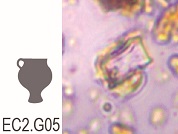Plant consumption and management during the first and second millennium AD at three archaeological sites in Santa María valley (Catamarca-Tucumán, Argentina)
DOI:
https://doi.org/10.14522/darwiniana.2021.91.939Keywords:
Archaeobotany, first and second millennium A.D., macroremains, microremains, residential spaces, Santa Maria valleyAbstract
This paper analyses the practices related to the consumption and management of plants in the central-western sector of the Santa María valley (Catamarca-Tucumán) during the first and second millennium AD. For this purpose, we worked with macroremains recovered in the occupation floors and with microremains present in ceramic vessels from the archaeological sites Morro del Fraile, El Carmen 1, and El Carmen 2. A total of 546 carpological macroremains corresponding to seven families, Amaranthaceae, Cactaceae, Cucurbitaceae, Fabaceae, Malvaceae, Poaceae and Solanaceae, and 10 microremains from the families Cucurbitaceae and Poaceae, were identified. The similarities between El Carmen 2 enclosure 2 and Morro del Fraile rock shelter suggest that sites occupied since the first millennium AD would have taken advantage of a greater diversity of plants, which in turn show a great diversity of management practices, in relation to sites occupied from the second millennium A.D., as observed in El Carmen 1 enclosures 1 and 13. The similarities between El Carmen 2 enclosure 2 and Morro del Fraile rock shelter would also indicate a diversity of contexts within the second millennium AD, with spaces that show a lower diversity of plants (El Carmen 1 enclosures 1 and 13) and spaces that, during the second millennium AD, exhibit practices that refer to those known for the villages of the first millennium AD (Morro del Fraile rock shelter), such as the consumption of a great diversity of wild, weedy and domesticated plants, with a predominance of Trichocereus and various Amaranthaceae.

Downloads
Published
How to Cite
Issue
Section
License

Starting on 2012, Darwiniana Nueva Serie uses Licencia Creative Commons Atribución-NoComercial 2.5 Argentina .





